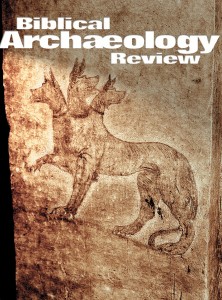Biblical Archaeology Review, March/April 2004
Special Section
The Seventh Sample
IAA Report Shows Evidence for Authenticity of “Jesus”
The Israel Antiquities Authority (IAA) last summer declared the inscription on the James ossuary—which reads, “James, son of Joseph, brother of Jesus”—to be a fake.a Since then, however, both the reasoning and the conclusion of the IAA report have been widely attacked by experts.b And the members...Read more ›
Features
Marisa Tomb Paintings
Recently Discovered Photos Show Long-Lost Details
Just over a hundred years ago, an American archaeologist discovered a series of spectacular tomb paintings dating from about 200 B.C.E. at a site in the foothills of the Judean mountains. Yet, within a few years, these precious works of art had faded into oblivion, and since...Read more ›
A Tale of Two Meetings
Issue of Antiquities Splits Scholars in Atlanta
The decision was unanimous: Antiquities collectors are criminals, responsible for the worldwide scourge of looting. That was the theme of the annual meeting of the American Schools of Oriental Research (ASOR), held in Atlanta late last November. ASOR, the leading professional organization of Near...Read more ›
Don’t Rush to Judgment
Jehoash Inscription May Be Authentic
BAR’s reports on the so-called Jehoash inscription—which describes repairs to the Solomonic Temple by King Jehoash in the ninth century B.C.E.—are unhesitatingly condemnatory: It is a fake. A piece by the BAR editor on the 15-line inscription is headed “Demonstrably a Forgery.”a My long-time...Read more ›
Pottery Talks
What Ceramics Tell Us About the Social World of Ancient Israel
So often it seems that pottery is boring. But the little bits of sherds that are ubiquitous on excavations tell us a lot. Thanks to pottery we can date structures such as buildings and the contents within them. But that’s not all that pottery...Read more ›

